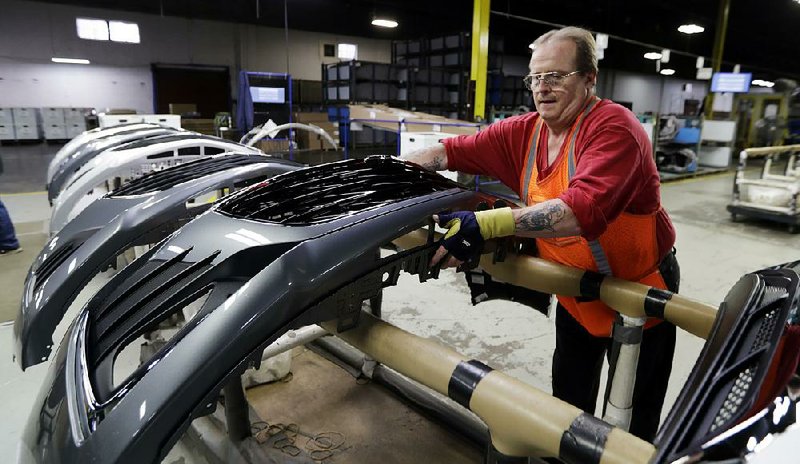WASHINGTON -- U.S. industrial production fell in March, pulled down by a drop in mining and automobile output. Factory output remained weak amid a slowing global economy and trade tensions with China.
The Federal Reserve says industrial output -- combining production at factories, utilities and mines -- slipped 0.1 percent in March from the previous month.
The drop occurred amid a deceleration of the U.S. economy as stimulus from last year's tax cuts faded. Growth in U.S. economic output slowed to a 2.2 percent annual pace the last three months of 2018 from 3.4 percent in the previous quarter.
Mining output declined 0.8 percent but was up 10.5 percent from March 2018.
Manufacturing production was flat after dropping in January and February. In the first three months of the year, factory output fell at an annual rate of 1.1 percent, the worst performance since late 2017. Production of cars, trucks and auto parts dropped 2.5 percent in March and 4.5 percent over the past year.
The data signal further manufacturing softness as producers cope with an inventory buildup, continuing uncertainty around trade and a dimming global growth outlook.
Utility production rose 0.2 percent after a sharp 3.7 percent increase in February. There were also gains in industries including primary metals, computers and electronics, and aerospace and other transportation equipment.
Machinery production rose 0.5 percent, while output of consumer goods fell 0.2 percent. Business-equipment production rose 0.4 percent.
Capacity utilization, measuring the amount of a plant that is in use, fell to a 78.8 percent average, the lowest since July, from 79 percent.
The U.S. and China have imposed tariffs on $350 billion worth of each other's goods in a dispute over Beijing's push to challenge U.S. technological dominance. President Donald Trump also has imposed import taxes on foreign steel and aluminum and is threatening to do the same for automobiles.
The International Monetary Fund, citing trade tensions, volatile financial markets and higher interest rates, last week downgraded its outlook for world economic growth to 3.3 percent, tied with 2016 as the slowest since the recession in 2009.
American manufacturers have also been dinged by a rise of more than 7 percent in the value of the dollar against other major currencies over the past year. A stronger dollar makes American goods pricier and less competitive in foreign markets.
"The factory sector has taken the brunt of the dislocations associated with tariffs and uncertainties around trade policy as well as dealing with the headwind of a stronger dollar," Stephen Stanley, chief economist at Amherst Pierpont Securities, said in a research note Tuesday. "Thus, it is not surprising that manufacturing activity is underperforming the overall economy."
The Fed's monthly data are volatile and often get revised. Manufacturing, which makes up about 75 percent of total industrial production, accounts for about 12 percent of the U.S. economy.
Information for this article was contributed by Paul Wiseman of The Associated Press and by Reade Pickert of Bloomberg News.
Business on 04/17/2019
